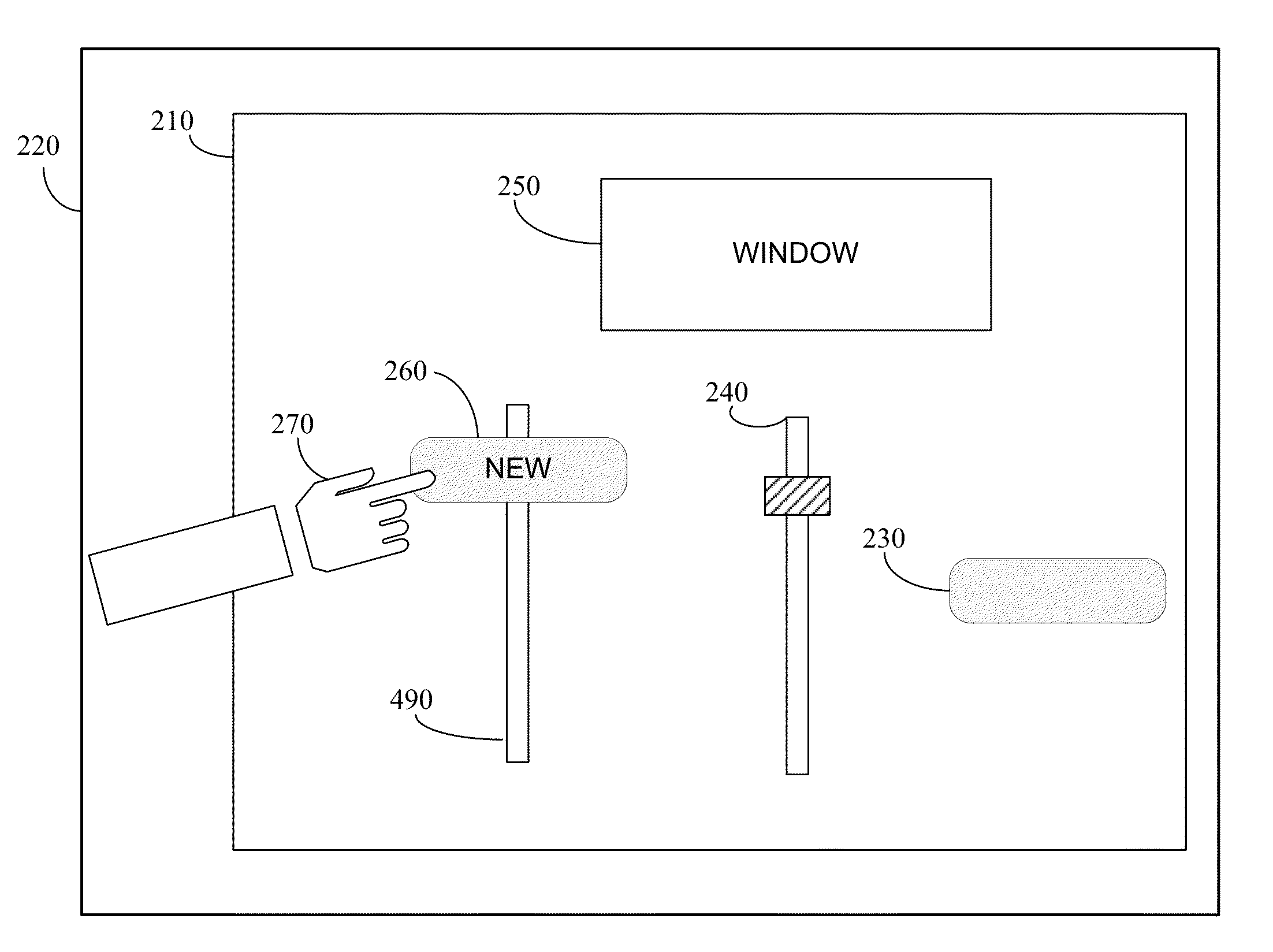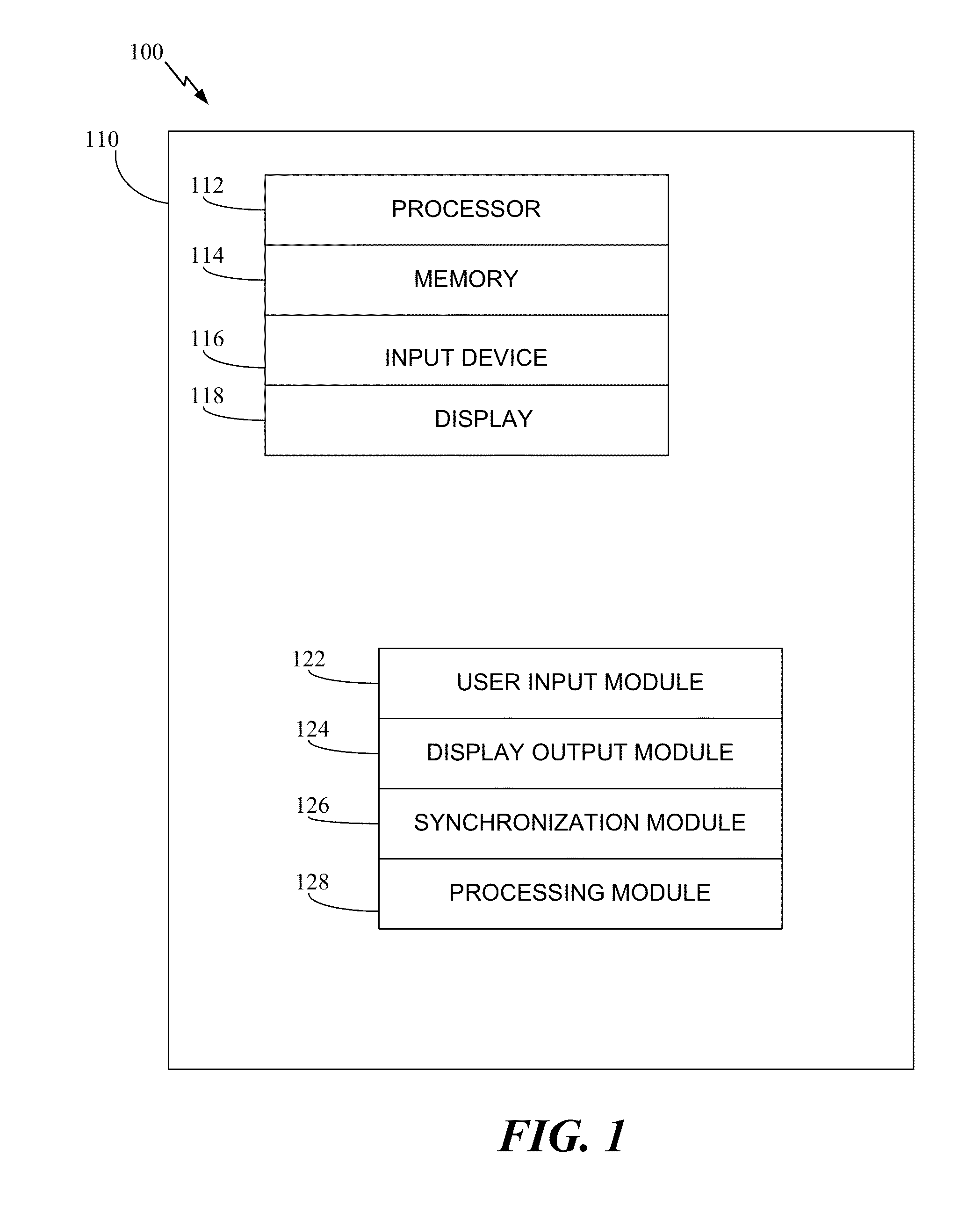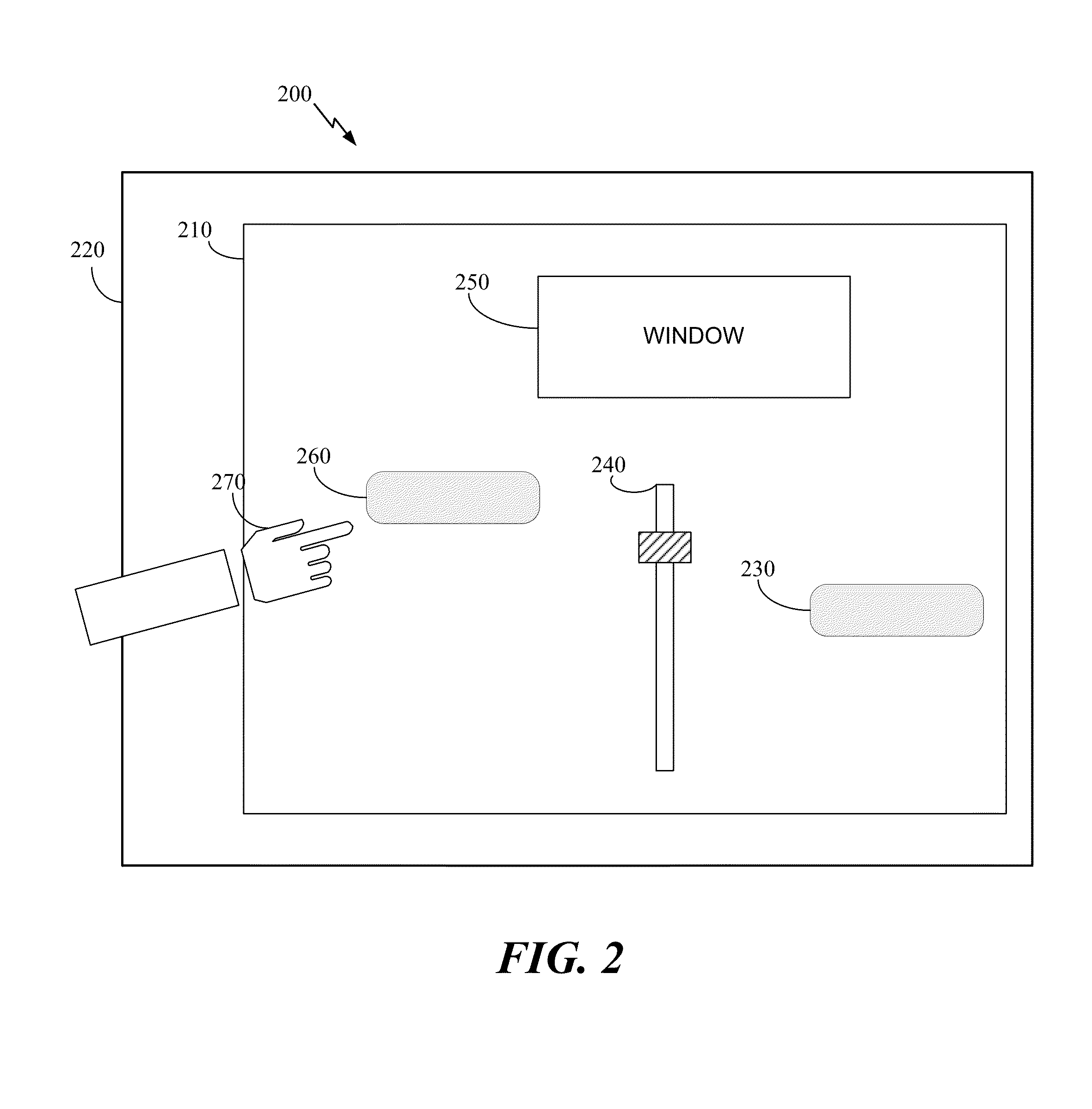Composite control for a graphical user interface
a graphical user interface and composite control technology, applied in the field of graphical user interfaces, can solve the problems of inadequate method for employing the functionality of both buttons and slider controls in a single graphical user interface element, and achieve the effects of simplifying the operator's interface with the computer, simplifying the appearance of the gui, and simplifying the operation
- Summary
- Abstract
- Description
- Claims
- Application Information
AI Technical Summary
Benefits of technology
Problems solved by technology
Method used
Image
Examples
Embodiment Construction
[0034]The method and system disclosed herein is a new composite control for a graphical user interface (“GUI”), including two traditional GUI elements, namely a button control (or button element) and a slider control (or slider element). In its normal state, the composite slidable-button control appears and functions as a button. The slidable-button control can function as a momentary control, active only as it is clicked or otherwise invoked. In another embodiment, the slidable-button control can function as a toggle on / off control, active once clicked or otherwise invoked and remaining active until clicked or otherwise invoked again. As with traditional button controls, the toggled on state can be denoted using a different appearance or legend text or both.
[0035]The slidable-button control can also be dragged in predetermined directions. In this case, a “dead zone” may be implemented so that the slidable-button control does not drag or follow the screen pointer until a predetermin...
PUM
 Login to View More
Login to View More Abstract
Description
Claims
Application Information
 Login to View More
Login to View More - R&D
- Intellectual Property
- Life Sciences
- Materials
- Tech Scout
- Unparalleled Data Quality
- Higher Quality Content
- 60% Fewer Hallucinations
Browse by: Latest US Patents, China's latest patents, Technical Efficacy Thesaurus, Application Domain, Technology Topic, Popular Technical Reports.
© 2025 PatSnap. All rights reserved.Legal|Privacy policy|Modern Slavery Act Transparency Statement|Sitemap|About US| Contact US: help@patsnap.com



